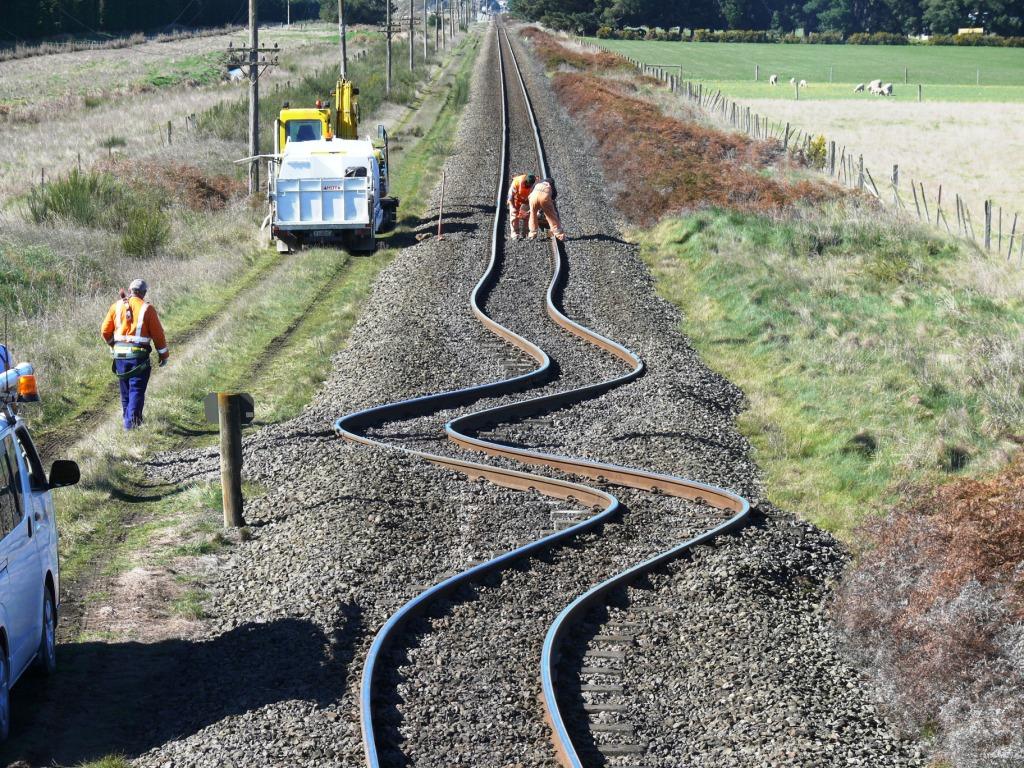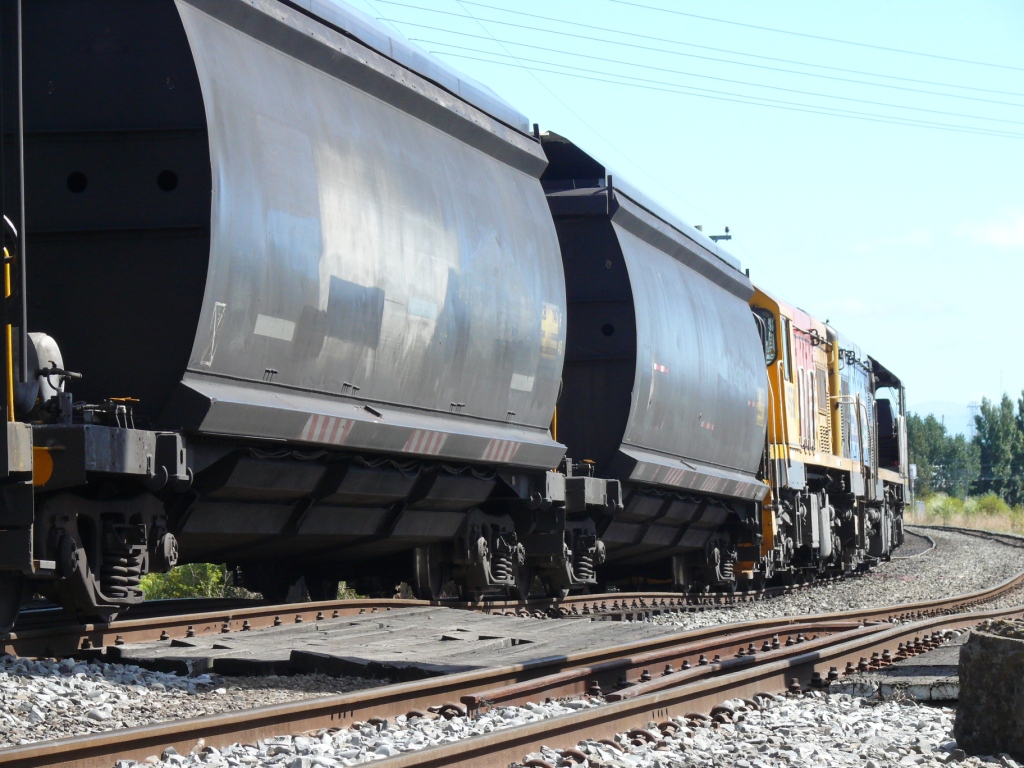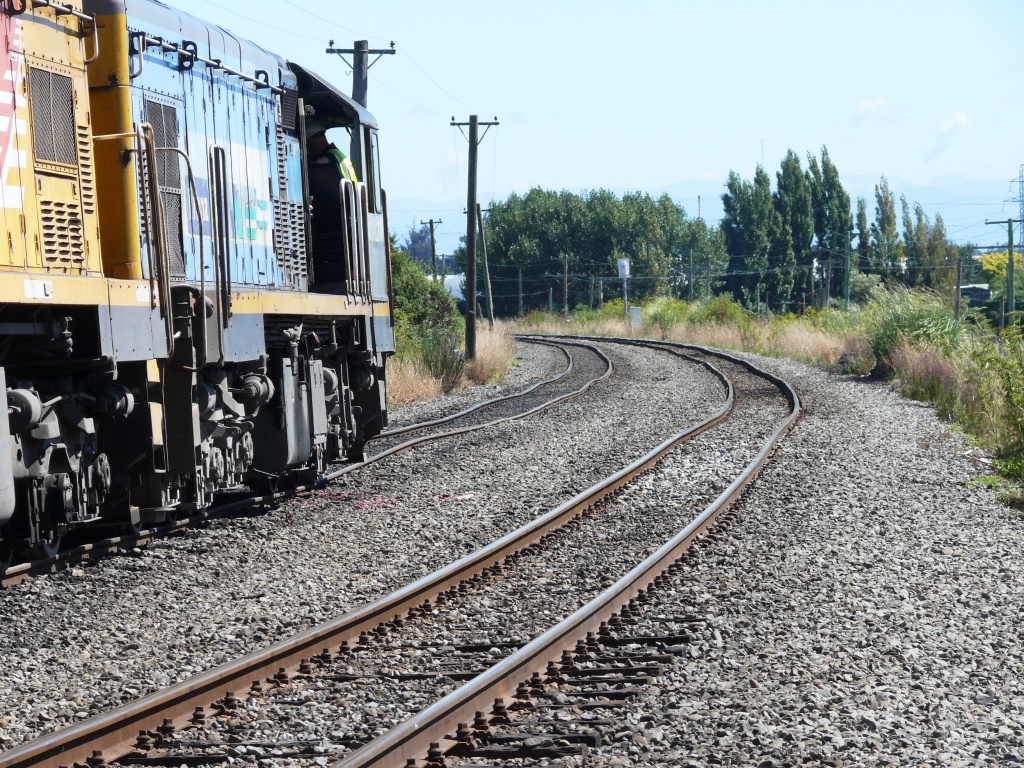8 March 2011
Distorted railway lines in the Christchurch Earthquake
Posted by Dave Petley
In terms of hits, the most popular post I have ever made was this one, containing Malcolm Teesdale’s iconic images (above) of distorted railways lines at Rolleston after the Darfield Earthquake in New Zealand (for those who have not seen this before, take a look at the comments at the bottom of the page – they are very helpful in understanding what happened at Rolleston). Very kindly, and despite having suffered damage to his house, Malcolm has provided an update from the Christchurch earthquake. There was no repeat of the deformation shown above, but as the two images below show, the tracks have still suffered notable deformation this time:
To understand the various types of deformation to which a railway track can be subjected it is essential to understand how the rails are set up. Malcolm has very kindly provided this article explaining the concept of destressing in railway track:
Destressing
Malcolm Teesdale (copyright the author)
Like most of us, I was taught at school that railway lines include joints to allow for the expansion and contraction of the rails. Without these joints the lines would buckle in the summer and pull apart in the winter. However, anyone who has travelled by train in recent years will have noticed that the once familiar “clickety-clack” caused by these joints has almost disappeared.
Of course, the railways of the world have not changed the laws of physics, but they have largely eliminated the need for expansion joints as jointless track, also known as Continuous Welded Rail (CWR)), is now the preferred track system. To achieve this safely, the elasticity of the steel in the rails is used. The steel used in modern rails is one of the most elastic materials known to man, such that within a small range it can be compressed or stretched almost endlessly without breaking or deforming.
In New Zealand, the rails are installed so that at 32ºC they are neutral – i.e. they are under neither compression or tension. When the rails are settled in this happy state they are anchored and welded into continuous lengths. When undertaken carefully the result is a section of track that is smooth to ride on, and the weak point associated with the joints require is eliminated. When the track heats it tries to expand but, because it is firmly anchored in place, expansion is prevented, resulting in compression of the track. Conversely, as it subsequently cools the compressed steel relaxes until it reaches its neutral temperature. Further cooling causes the rail to attempt to shrink but because it is anchored in place it simply stretches. When it warms again it expands such that the stretched rail relaxes. Thus, the process of installing rails at the correct neutral temperature is known in the industry as “Destressing”. Obviously, rail laying cannot wait for days in which the temperature is exactly 32ºC, so to accommodate this, the temperature is carefully checked as rail is installed and the rail is adjusted to match.
Rail laying stops when 32ºC is exceeded. At lower temperatures the rail length is measured, its temperature is taken and a calculation is made to determine how much rail must be removed. The required section of rail is then removed and the rail is stretched, plated and anchored. Large hydraulic pullers can stretch the rail by brute force and hold it in place until it is plated or welded. Alternatively, the rails are simply heated and allowed to expand. The heating comes from a 100 m length of fibreglass rope that is soaked in diesel, tucked into the web of the rail and ignited. The intense heat expands the rail and as long it has been released from the fastenings a few gentle taps with a sledge hammer will close the gap and allow the joints to be made. The rope is an American invention which was introduced to New Zealand Railways during the brief period when Wisconsin Rail had a controlling interest in the company. Compared to the immense force involved in physically stretching the rail the rope was so easy that it promptly became known as the “Magic Rope”
With care CWR provides a safe smooth railway line, but it is dependent on maintaining a solid formation with good ballast shoulders and a well anchored track. Extreme attention to detail is required whenever changes are made. It is vital that if a faulty section of rail is replaced the exact amount removed must be replaced, and any work involving curves must restore the curve to its correct distressed state on completion. If curves are altered in cold weather they naturally realign to be neutral at the current ambient temperature and are then at risk of buckling on the first hot day of summer.
One thing that cannot be prevented is earthquake damage to railway lines. The now infamous image shown at the top of this post was collected as we started to repair the damaged track at Rolleston. This length of track was rated as correctly distressed, had good ballast shoulders and concrete sleepers with Pandrol clips, making it immensely strong. However, movement of the fault during the Darfield earthquake induced local compression over a distrusted zone. As a result the towns of Darfield and Rolleston are now two metres closer together. This created a zone of surplus rail, which was focused at the point shown on the image, allowing the generation of a buckle located three km west of Rolleston on the Midland Line, just east of the end of the Greendale fault scarp. Although extreme, the track failure took the same form as a heat buckle. However, unlike with a heat buckle there was little compressive force left in the rail, which allowed us to cut out the crippled section without too much trouble. The section was replaced with new rail about two metres shorter. The power lines beside the track suffered a similar fate, with five span of wire needing to be released and re-tensioned. Again about two metres of copper had to be removed to eliminate the droops in the wire. Repairs were completed on the day of the earthquake, but the loco that stopped short of the buckle was not moved until the next day because the engineer who had to check it before it could be moved had serious damage to his house, and thus could not come to work immediately.





 Dave Petley is the Vice-Chancellor of the University of Hull in the United Kingdom. His blog provides commentary and analysis of landslide events occurring worldwide, including the landslides themselves, latest research, and conferences and meetings.
Dave Petley is the Vice-Chancellor of the University of Hull in the United Kingdom. His blog provides commentary and analysis of landslide events occurring worldwide, including the landslides themselves, latest research, and conferences and meetings.
HOW DO i GET PERMISSION TO USE mALCOLM TEESDALE’S IMAGE OF DISTORTED RAILWAY TRACKS?
To be honest I don’t know now. I have lost contact with Malcolm.
what follow up was done to explain the curved tracks? any answers?